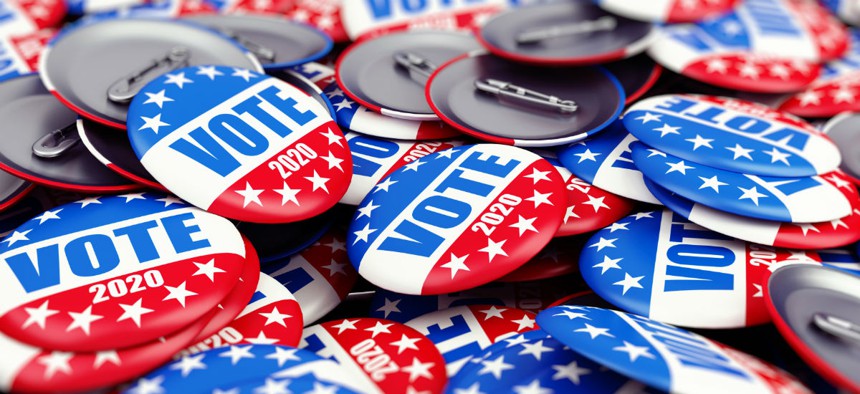
Shutterstock.com
Scholar Predicts Government Reform Could Motivate 2020 Voters
New survey data suggest the presidential race outcome could turn on candidate plans for “rebuilding broken bureaucracy,” says New York University’s Paul Light.
Themes for the off-and-running 2020 election campaign will clearly include standbys like the economy and immigration as well as fresh controversies over President Trump’s conduct and governing style.
But new research on voter attitudes toward Washington suggests a new alignment that could place government reforms at the center of the two-party clash, according to Paul C. Light, professor of public service at New York University.
“Although Democrats were more likely than Republicans to favor very major reform under Trump, the differences were much less significant,” he wrote in an analysis of polls published Thursday by the Brookings Institution. New survey numbers show that “Trump divided the nation on major issues such as immigration, identity, and Obamacare, but brought the nation together on the demand for reform.”
Acknowledging that voter demand for government reform typically is stronger when the voter’s preferred party is out of power, Light’s new numbers highlight a convergence of two key categories of voters that both parties will vie for. “Dismantlers” are those he calls Trump-leaning voters who want major reform to deliver a smaller government that provides fewer services. In the past few years, poll numbers show that dismantlers have traveled a parallel path with “rebuilders,” who lately leaned toward Hillary Clinton and favor major reform to create a bigger government that provides more services.
The number of dismantlers surged from a 17% share of public support in 1997 to a 43% plurality in August 2016 before falling back to 35% in October 2018, Light wrote. Rebuilders surged from a 16% share of public support in 1997 to a 25% share in August 2016 before accelerating to 36% in October 2018.
That puts the two groups in a statistical dead heat, he said.
Light’s remaining two categories, “streamliners” and “expanders” have seen their numbers fall—though the winning candidate will still need to attract them, he cautions. But both Light’s April data and other recent surveys supported by the nonpartisan Volcker Alliance “suggest Americans may have finally found common ground in their demand for better government—or at least the deep reform that might produce it,” he wrote.
With some dips and rises, the share of Americans who think the government needs “very major reform” has risen from a low of 35% in 1997 to a percentage hovering in the mid-60s, his research shows.
“This realignment of public views toward government reform sets the stage for a showdown between two very different destinations for reform in the 2020 presidential campaign,” he concluded. “Untethered to a sitting administration, the next Democratic presidential nominee will be free to introduce government reform as part of a full-blown attack on Trump, his appointees, and his funders, even as she or he offers Americans a reason for hope as the nation rebuilds a broken federal bureaucracy.”
Trump, Light argues, may have “alienated some of his supporters with his failure to drain the swamp, improve government performance, and attack the federal deficit even as he has continued to promote deep state conspiracies, bemoan his lack of consistent allies, tolerate bureaucratic malfeasance among his appointees, and question effort to reorganize government as ‘extraordinarily boring’ and therefore not fit for camera.”
Democrats, however, “will have to do more than promise a blue wave of new programs to recapture the Senate and defeat Trump,” he said. “Most Americans may favor federal action to strengthen the economy, prevent terrorism, guarantee safe food and drugs, and rebuild the nation’s roads and bridges, but they also worry the federal government cannot honor the promises made. Many give the government poor ratings on running its programs, believe the bureaucracy is almost always wasteful and inefficient, are either angry or frustrated toward government, and think ordinary Americans would do a better job at solving the nation’s problems than their elected representatives.”
There was some skepticism that government reform would emerge as central to the 2020 campaign when Light presented his findings to a Thursday panel at New York University’s Washington office.
“Trump is not a dismantler, but a destroyer,” said conservative commentator Bill Kristol, suggesting that Trump has little patience for constructive reorganization. “He’s not interested in entitlement reform and is cheerfully running trillion-dollar deficits.” At the same time, Trump tells voters “he’s putting government on your side.”
The big divide between the two parties on government, added Brookings Institution analyst Vanessa Williamson, is chiefly over “whether to help the poor.”
NEXT STORY: Why Engagement Matters and How to Improve It







